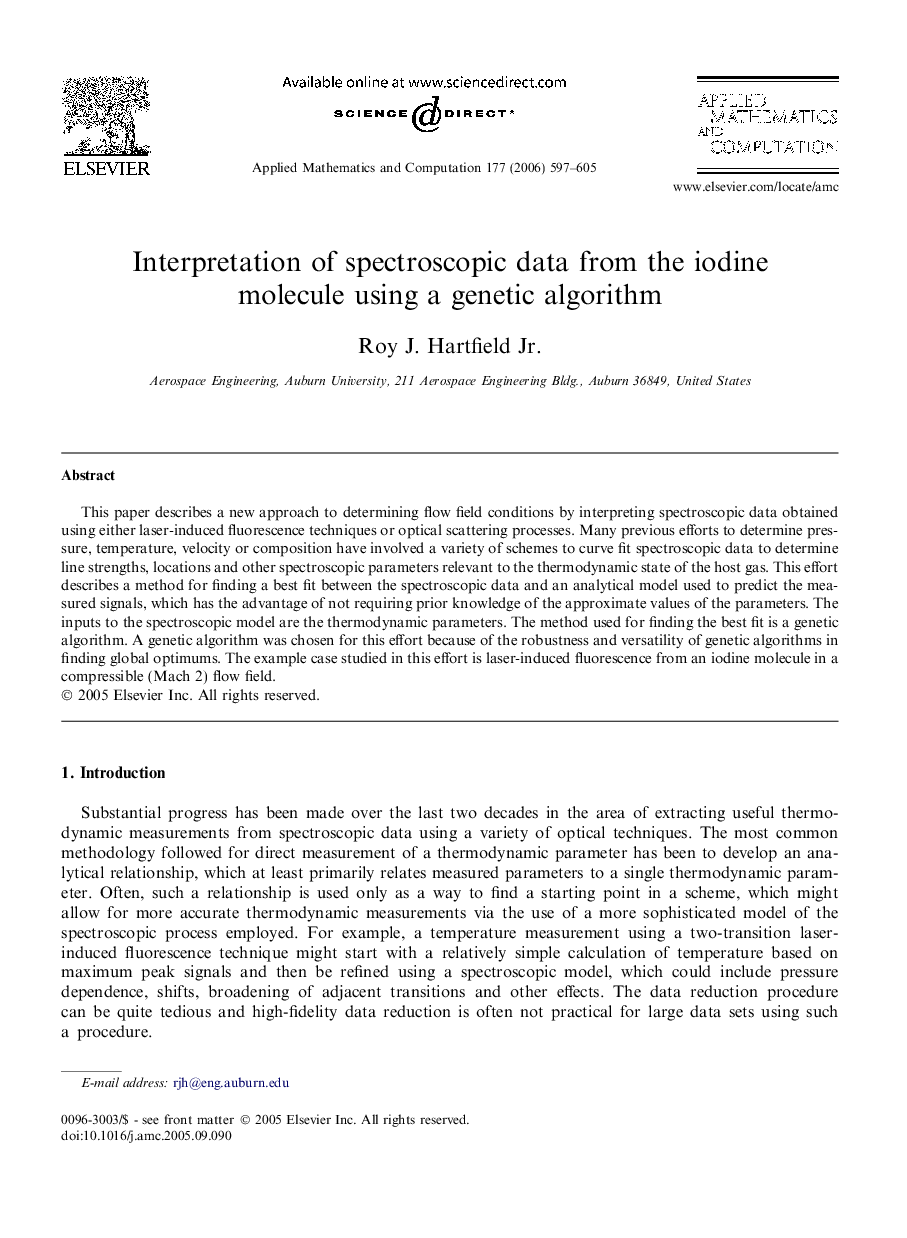| Article ID | Journal | Published Year | Pages | File Type |
|---|---|---|---|---|
| 4636992 | Applied Mathematics and Computation | 2006 | 9 Pages |
This paper describes a new approach to determining flow field conditions by interpreting spectroscopic data obtained using either laser-induced fluorescence techniques or optical scattering processes. Many previous efforts to determine pressure, temperature, velocity or composition have involved a variety of schemes to curve fit spectroscopic data to determine line strengths, locations and other spectroscopic parameters relevant to the thermodynamic state of the host gas. This effort describes a method for finding a best fit between the spectroscopic data and an analytical model used to predict the measured signals, which has the advantage of not requiring prior knowledge of the approximate values of the parameters. The inputs to the spectroscopic model are the thermodynamic parameters. The method used for finding the best fit is a genetic algorithm. A genetic algorithm was chosen for this effort because of the robustness and versatility of genetic algorithms in finding global optimums. The example case studied in this effort is laser-induced fluorescence from an iodine molecule in a compressible (Mach 2) flow field.
